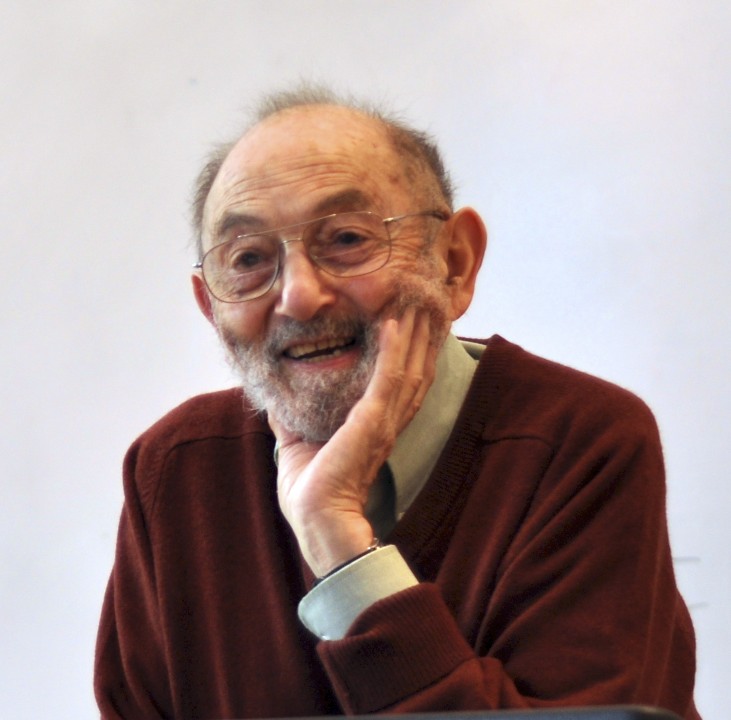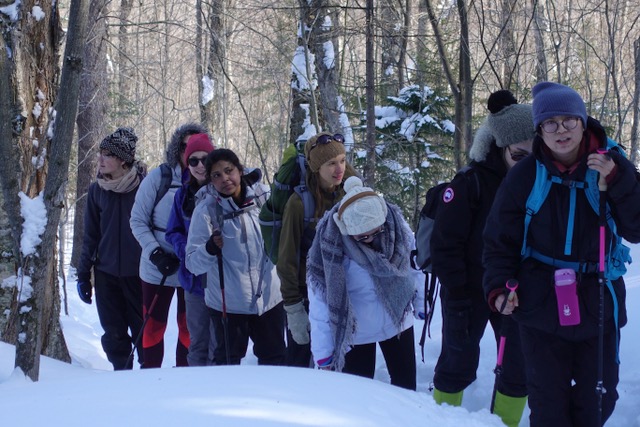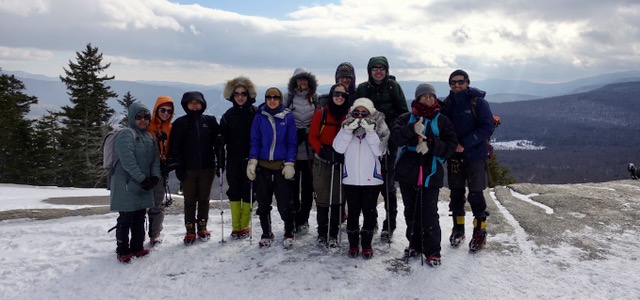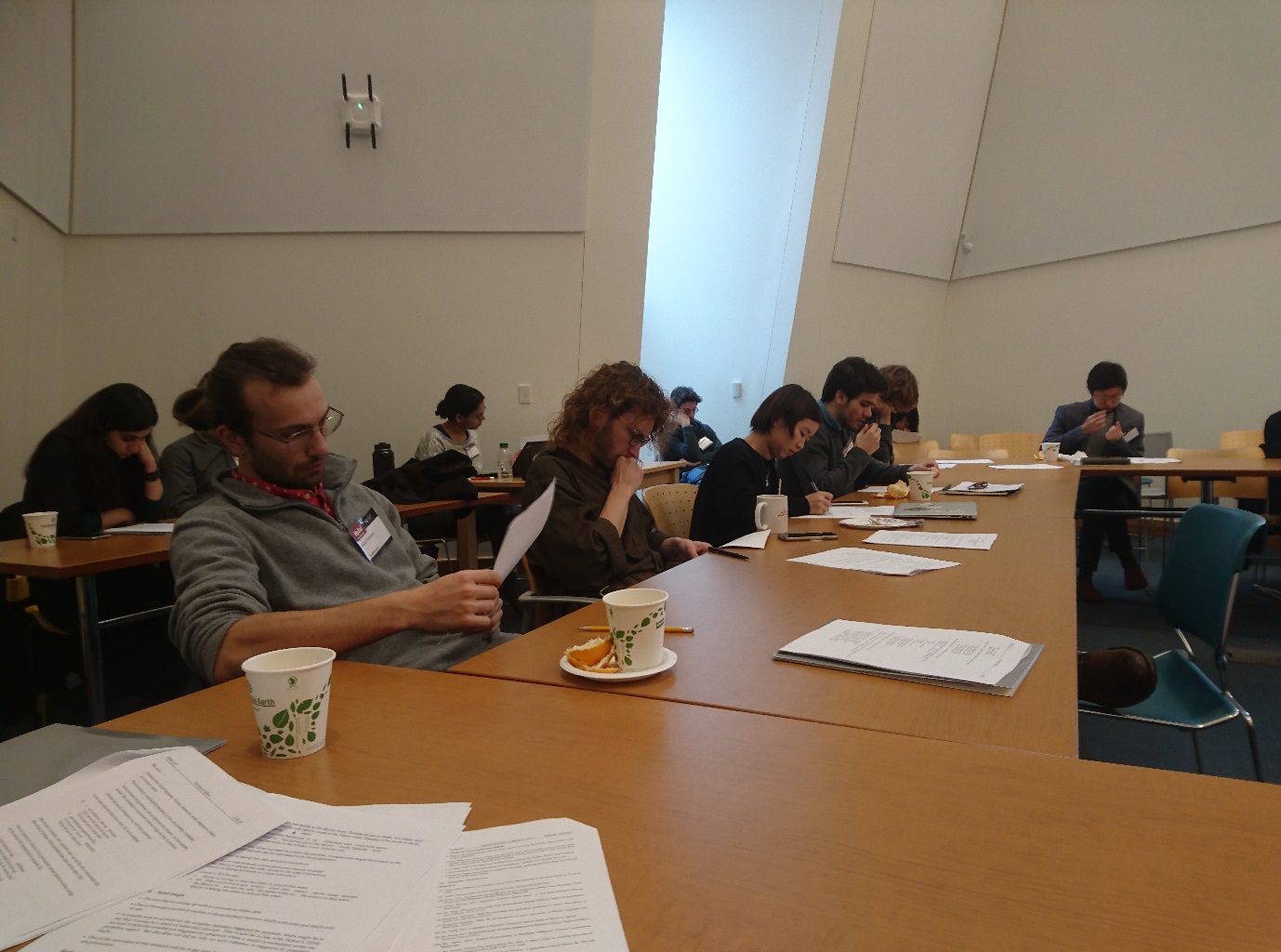Course Announcements in this post:
- 24.942 Topics in the grammar of a less familiar language
- 24.954 Pragmatics in Linguistic Theory
- 24.956 Topics in Syntax
- 24.963 Linguistic Phonetics
- 24.964 Topics in Phonology
- 24.966J Laboratory on the Physiology, Acoustics, and Perception of Speech
- 24.979 Topics in Semantics
- 9.19/9.190 Computational Psycholinguistics
________________________________________________________________________
24.942 Topics in the grammar of a less familiar language
- Instructors: Kenstowicz, Richards
- Schedule: M 2-5pm
- Room: 32-D831
This year’s Less-Familiar Language will be Wolof (Niger-Congo, Atlantic). We’ll spend the semester learning about Wolof’s structure (phonology, morphology, syntax, semantics), and practicing techniques for working with a native speaker of a language to learn about that language.
________________________________________________________________________
24.954 Pragmatics in Linguistic Theory
- Instructor: Fox
- Schedule: T 10am-1pm
- Room: 32-D461
Formal theories of context-dependency, presupposition, implicature, context-change, focus and topic. Special emphasis on the division of labor between semantics and pragmatics. Applications to the analysis of quantification, definiteness, presupposition projection, conditionals and modality, anaphora, questions and answers.
________________________________________________________________________
24.956 Topics in Syntax
- Instructor: Richards
- Schedule: T 2-5pm
- Room: 32-D461
This course will be an exploration of the relation between syntax and phonology, in the framework of Contiguity Theory (Richards 2016). We’ll start by familiarizing ourselves with the main claims of Contiguity Theory, both in the 2016 book and in work done since. This is an approach that posits a different kind of relation between syntax and phonology than is usually assumed; in particular, the syntax can be motivated to perform operations by the need to create phonologically well-formed objects. We’ll discuss the implications of this approach for the architecture of the grammar. Other topics of discussion will include the distribution of overt movements of various kinds, EPP effects, intervention effects, and conditions on pied-piping.
________________________________________________________________________
24.963 Linguistic Phonetics
- Instructor: Flemming
- Schedule: MW 10-11:30am
- Room: 56-180
The study of speech sounds: how we produce and perceive them and their acoustic properties. The influence of the production and perception systems on phonological patterns and sound change. Acoustic analysis and experimental techniques.
We will be considering three fundamental questions:
- How do we produce speech?
- How do we perceive speech?
- How does the nature of these processes influence the sound patterns of languages?
We will also be learning experimental methods and analytical techniques that enable us to address these (and other) questions.
________________________________________________________________________
24.964 Topics in Phonology
- Instructor: Feldman, Katzir, Levy
- Schedule: TR 5-6:30pm
- Room: T 32-D461, R 46-5165
Learning and Linguistic Representations
Models of unsupervised language learning are central to understanding human cognition and replicating it in machines. Computational advances and the availability of large speech and text corpora make it more tractable than ever before to build and evaluate such models. This seminar considers the rich latent structures that are present in human language, and recent computational work in unsupervised learning that can provide insight into what those structures are like and whether and how they might be learned. Seminar participants will take turns leading discussions of original research papers. The seminar is open to graduate students, postdocs, faculty, and well-prepared, highly-motivated undergraduates. Participants should have a strong background in at least one of two areas: (i) linguistic representation; (ii) computational approaches to learning, and should have an interest in gaining expertise in the other area. In addition to participating in and taking turns leading seminar discussions, registered students may be required to complete periodic homework assignments and will write a final paper, either individually or in a group, that relates to unsupervised learning of linguistic knowledge.
________________________________________________________________________
24.966J Laboratory on the Physiology, Acoustics, and Perception of Speech
- Instructor: Braida, Shattuck-Hufnagel, Choi
- Schedule: TR 11am-1pm
- Room: 35-308
Experimental investigations of speech processes. Topics include computer-aided waveform analysis and spectral analysis of speech; synthesis of speech; perception and discrimination of speech-like sounds; speech prosody; models of speech recognition; speech development; analysis of atypical speech; and others. Recommended prerequisite: 6.002, 18.03, or 24.900.
________________________________________________________________________
24.979 Topics in Semantics
- Instructor: Fox, Heim, Schwarzschild
- Schedule: R 2-5pm
- Room: 32-D461
We will begin this seminar with a discussion of issues that arise in the semantics of plurality: when is a predicate true of a plural definite description and when is it false?, are there cases where it is neither true nor false (cases of homogeneity)?, Is there anything interesting to say about when a sentence which neither true nor false is taken to be true, how do answers to these questions bear on the semantics of various constituents dominating a plural definite description?, etc. We will then move to discuss other areas of grammar where similar questions have been raised (questions, generics, conditionals, neg-raising). This, as usual, will likely take us to problems that are not directly related to those with which we will start.
________________________________________________________________________
9.19/9.190 Computational Psycholinguistics
- Instructor: Levy
- Schedule: MW 9:30-11am
- Room: 46-4199
Over the last two and a half decades, computational linguistics has been revolutionized as a result of three closely related developments: increases in computing power, the advent of large linguistic datasets, and a paradigm shift toward probabilistic modeling. At the same time, similar theoretical developments in cognitive science have led to a view major aspects of human cognition as instances of rational statistical inference. These developments have set the stage for renewed interest in computational approaches to human language acquisition and use. Correspondingly, this course covers some of the most exciting developments in computational psycholinguistics over the past decade. The course spans human language comprehension, production, and acquisition, and covers key phenomena spanning phonetics, phonology, morphology, syntax, semantics, and pragmatics. Students will learn technical tools including probabilistic models, formal grammars, neural networks, and decision theory, and how theory, computational modeling, and data can be combined to advance our fundamental understanding of human language acquisition and use.
This course is open to undergraduate and graduate students in Brain & Cognitive Sciences, Linguistics, Electrical Engineering & Computer Science, and any of a number of related disciplines. Enrollees should have (i) one semester of programing experience (ideally Python, fulfillable e.g. by 6.00), plus (ii) either (a) one semester of probability/statistics/machine learning (e.g., 6.041B or 9.40) or (b) one semester of linguistics. The undergraduate section is 9.19, the graduate section is 9.190. Required work will include problem sets, exams, and (for enrollees in 9.190) a final project. Postdocs and faculty are also welcome to participate!
The course will meet twice a week; course format will be a combination of lecture, discussion, and in-class exercises as class size, structure, and interests permit.




